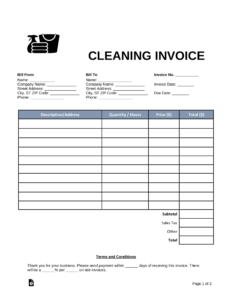In today’s fast-paced and visually-driven world, design plays a vital role in capturing attention, conveying messages, and creating meaningful experiences. Whether it’s in the field of graphic design, product design, or web design, having a solid design background is essential for professionals to succeed. This article explores the significance of a design background and how it can enhance creativity and problem-solving skills to produce effective and visually appealing outcomes.
What is Design Background?
Design background refers to the knowledge, skills, and experiences that an individual possesses in the field of design. It encompasses a wide range of disciplines, including graphic design, industrial design, interior design, fashion design, and more. Having a design background means having a strong foundation in design principles, techniques, and processes.
Design background can be acquired through formal education, such as obtaining a degree in design or related fields, or through practical experience gained from working on various design projects. Regardless of how it is acquired, a design background provides individuals with the necessary tools to approach design challenges with creativity and expertise.
The Value of a Design Background
1. Cultivating Creativity: A design background nurtures creativity by encouraging individuals to think outside the box and explore innovative solutions. Through exposure to different design styles, techniques, and trends, designers develop a unique perspective that enables them to create visually compelling and original works.
2. Understanding Design Principles: A solid design background equips individuals with a deep understanding of design principles, such as balance, rhythm, contrast, and proportion. These principles serve as the foundation for all design decisions, ensuring that the final outcome is aesthetically pleasing and effective in communicating the intended message.
3. Enhancing Problem-Solving Skills: Design is inherently problem-solving. A design background trains individuals to approach challenges analytically, identify user needs, and develop appropriate solutions. Designers learn how to gather information, conduct research, and apply critical thinking to create designs that address specific problems or meet specific objectives.
4. Effective Communication: Design is a language of its own, and individuals with a design background are adept at using visual elements to communicate ideas and messages effectively. Whether it’s through typography, color schemes, or layout, designers can convey emotions, create brand identities, and engage audiences in a way that words alone cannot achieve.
5. Collaboration and Adaptability: Designers often work in multidisciplinary teams and need to collaborate with professionals from various backgrounds. A design background instills the ability to work well with others, understand different perspectives, and adapt designs to meet specific project requirements.
Examples of Successful Design Backgrounds
Several notable individuals have leveraged their design backgrounds to achieve remarkable success in their respective fields. Let’s explore a few examples:
1. Jonathan Ive
Jonathan Ive, the former Chief Design Officer at Apple, is widely recognized for his contribution to the design of iconic Apple products, including the iPhone, iPod, and MacBook. Ive’s design background and expertise in industrial design played a pivotal role in shaping Apple’s product line, revolutionizing the tech industry, and setting new standards for minimalist and user-centric design.
2. Paula Scher
Paula Scher, a renowned graphic designer, is known for her innovative and bold approach to branding and typography. With a design background rooted in graphic design, Scher has created iconic logos and brand identities for companies like Citibank and Microsoft. Her ability to blend typography, color, and imagery has made her a leading figure in the field of graphic design.
3. Philippe Starck
Philippe Starck, a French industrial designer, has left an indelible mark on the world of product design. With a design background that spans various disciplines, including furniture design, interior design, and architecture, Starck has created iconic products like the Louis Ghost Chair and the Juicy Salif juicer. His designs are characterized by their sleek and modern aesthetic, emphasizing both form and function.
Case Studies: How Design Background Drives Success
Case studies provide concrete examples of how a design background can drive success and innovation in various industries. Let’s examine two case studies that highlight the impact of design background:
Case Study 1: Airbnb
Airbnb, the global online marketplace for lodging and experiences, owes much of its success to its design background. The founders, Brian Chesky, Joe Gebbia, and Nathan Blecharczyk, all had design backgrounds, which played a crucial role in shaping the user experience and visual identity of the platform.
By applying their design knowledge and problem-solving skills, the founders transformed the way people search, book, and experience accommodations. The intuitive user interface, visually appealing listings, and consistent brand identity have contributed to Airbnb’s rapid growth and dominance in the hospitality industry.
Case Study 2: Tesla
Tesla, the electric vehicle manufacturer, is another prime example of how a design background can drive innovation and disrupt traditional industries. Elon Musk, the CEO of Tesla, has a design background, which has heavily influenced the company’s product design and user experience.
Musk’s design-driven approach has resulted in sleek, futuristic car designs that have captivated consumers and redefined the perception of electric vehicles. Tesla’s success can be attributed, in part, to its ability to create aesthetically pleasing and technologically advanced vehicles that appeal to a wide range of consumers.
Statistics: The Impact of Design Background
Statistics provide quantitative evidence of the impact of design background in various domains. Let’s take a look at some compelling statistics:
- According to a study by the Design Management Institute, design-driven companies outperformed the S&P 500 index by 219% over a 10-year period.
- A study conducted by McKinsey & Company found that companies that prioritize design outperform their competitors in terms of revenue growth and shareholder returns.
- According to a report by Adobe, 73% of companies invest in design to differentiate their brands and create a competitive advantage.
- In a survey conducted by The Creative Group, 67% of advertising and marketing executives said that a candidate’s design background is important when hiring for creative positions.
- A study published in the Journal of Product Innovation Management found that firms with higher levels of design integration in their business processes achieve higher levels of innovation performance.
Frequently Asked Questions (FAQs)
1. How can I develop a design background?
To develop a design background, you can pursue formal education in design or related fields, such as graphic design, industrial design, or architecture. You can also learn through online courses, workshops, and by working on design projects to gain practical experience.
2. Is a design background necessary for a career in design?
While a design background is not always a strict requirement for a career in design, it significantly enhances your chances of success. A design background provides you with the necessary skills, knowledge, and perspective to excel in the field of design.
3. Can a design background be helpful in non-design fields?
Absolutely! A design background cultivates valuable skills such as creativity, problem-solving, and effective communication, which are applicable in a wide range of fields. The ability to think critically and approach challenges from a design perspective can be an asset in any profession.
4. How does a design background contribute to business success?
A design background contributes to business success by helping companies differentiate their brands, create visually appealing products and services, and improve user experiences. Design-driven companies often outperform their competitors and achieve higher levels of innovation and revenue growth.
5. Can a design background be self-taught?
While formal education can provide a structured learning experience, a design background can also be self-taught. Many successful designers have honed their skills through self-study, practical experience, and continuous learning. The key is to practice and immerse yourself in the world of design.
Conclusion
A design background is a valuable asset in today’s visually-oriented world. It cultivates creativity, enhances problem-solving skills, and enables effective communication. Through examples, case studies, and statistics, we have explored the significance of a design background in driving success and innovation in various industries.
Whether you aspire to be a graphic designer, an industrial designer, or any other design professional, investing in a design background will provide you with the necessary foundation to excel in your field. So, embrace the power of design and unlock your creative potential!
FAQs
1. Can I be successful in design without a formal design background?
While a formal design background can provide a strong foundation, it is not the sole determinant of success in design. Many successful designers have built their careers through practical experience, self-study, and continuous learning. With dedication and a passion for design, you can achieve success regardless of your educational background.
2. How can I stay updated with the latest design trendsand techniques?
To stay updated with the latest design trends and techniques, there are several strategies you can employ:
- Follow design blogs and websites: There are numerous design-focused blogs and websites that regularly publish articles, tutorials, and showcases of the latest design trends. Some popular ones include Smashing Magazine, Creative Bloq, and Awwwards.
- Join design communities: Participating in design communities, both online and offline, can provide valuable insights and opportunities for networking. Websites like Dribbble and Behance allow designers to showcase their work and connect with other professionals in the design industry.
- Attend design conferences and workshops: Design conferences and workshops are excellent opportunities to learn from industry experts, gain exposure to new techniques, and network with like-minded individuals. Events like Adobe MAX and Design Thinking conferences offer valuable insights and inspiration.
- Engage in continuous learning: Design is a constantly evolving field, and it’s essential to embrace lifelong learning. Take advantage of online courses, tutorials, and workshops to expand your skillset and stay up to date with the latest tools and techniques.
- Experiment and practice: One of the best ways to stay updated with design trends is to experiment and practice on your own. Try new design styles, explore different tools and technologies, and challenge yourself to push the boundaries of your creativity.
3. How can a design background benefit non-design professionals?
A design background can benefit non-design professionals in several ways:
- Enhanced communication skills: Designers are skilled in visually communicating ideas, which can benefit professionals in fields such as marketing, sales, and business development. The ability to present information visually can engage audiences and improve message retention.
- Creative problem-solving: Designers approach problems from a unique perspective, combining analytical thinking with creativity. This problem-solving mindset can be applied to various industries, helping non-design professionals think outside the box and find innovative solutions.
- User-centered approach: Designers prioritize the needs and preferences of users, which can be valuable in fields like customer service, product development, and user experience. Understanding user needs and designing solutions that meet those needs can drive customer satisfaction and loyalty.
- Attention to detail: Designers have a keen eye for detail and aesthetics. This attention to detail can benefit professionals in fields such as architecture, fashion, and interior design, where the visual appeal and functionality of products or spaces are essential.
4. Are there any downsides to having a design background?
While a design background offers numerous advantages, there are some potential downsides to consider:
- Subjectivity: Design is subjective, and different individuals may have different opinions on what constitutes good design. This subjectivity can sometimes lead to conflicts or challenges in collaborating with individuals who have differing design perspectives.
- Constant learning: Design is a field that is constantly evolving, with new tools, techniques, and trends emerging regularly. Designers must stay updated and continuously learn to remain relevant in the industry, which can require a significant investment of time and effort.
- High expectations: With a design background, there may be higher expectations placed on your work in terms of visual appeal and creativity. This can lead to added pressure to consistently deliver exceptional designs and meet client or employer expectations.
5. How can I leverage my design background to stand out in the job market?
To leverage your design background and stand out in the job market, consider the following strategies:
- Build a strong portfolio: Your portfolio is a visual representation of your skills and capabilities. Curate a collection of your best design work and showcase it in a visually appealing and organized manner.
- Showcase your process: Employers are often interested in understanding your design process and how you approach problem-solving. Include case studies or descriptions of your design projects that highlight your methodology and critical thinking skills.
- Highlight your achievements: If you have received awards, recognition, or positive feedback for your design work, make sure to highlight these accomplishments in your resume and portfolio. This demonstrates your expertise and dedication to your craft.
- Stay up to date: Continuously learning and staying updated with the latest design trends and technologies shows employers that you are committed to your professional growth. Mention any relevant courses, workshops, or certifications you have completed.
- Network and collaborate: Building connections within the design community can lead to opportunities and referrals. Attend industry events, participate in online communities, and seek out collaboration opportunities to expand your network.
Summary
A design background is a valuable asset that enhances creativity, problem-solving skills, and effective communication. It provides individuals with the necessary tools and knowledge to excel in various design disciplines and drive innovation in their respective fields. Design background has been instrumental in the success of companies like Apple and Airbnb, as well as individuals like Jonathan Ive and Paula Scher. Statistics also support the significant impact of design-driven companies in terms of revenue growth and shareholder returns. Whether you aspire to be a designer or leverage design thinking in other professions, investing in a design background will unlock your creative potential and set you apart in the competitive job market.





